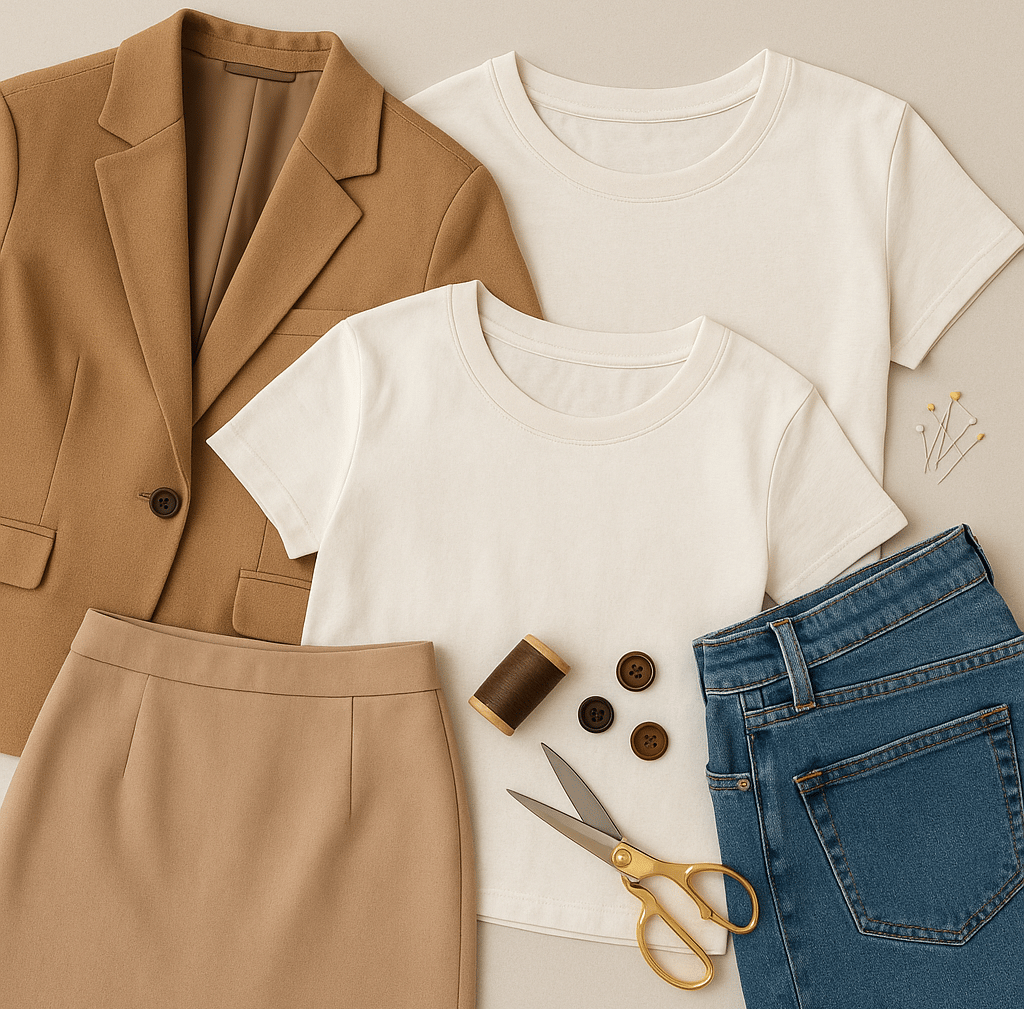Discover amazing discounts on sewing patterns-Fabric-Doll CLothes-eBooks-Yarn-& Other Handmades!
How To Sew Clothes That Last
Learn how to sew durable garments with professional techniques that extend the life of your handmade clothing. From reinforced seams to strong closures and smart pattern choices, this guide shows you how to sew clothes that truly last.
SEWING TIPS AND TECHNIQUES
Rhonda Harris
8/19/20253 min read
Sew Smarter: Tips and Techniques for Making Clothes That Stand the Test of Time
If you read my article on The Most Durable Fabrics to Sew, you already know that choosing the right fabric is the foundation of any long-lasting garment. But strong fabric alone isn’t enough.
The real secret to sewing durable clothes? It’s in the details—your pattern choices, seam techniques, reinforcement, and even your thread selection. Whether you’re sewing for daily wear, outdoor work, or just want your clothing to hold up season after season, this guide will show you how to sew with longevity in mind.
🧷 1. Choose the Right Sewing Pattern
A durable garment starts with a practical sewing pattern. Look for designs that:
Allow for movement and stress distribution
Include details like facings, topstitching, or lining
Offer well-supported closures (like zippers or button plackets)
Avoid overly fragile design elements if your goal is daily wear
Great options: jackets, aprons, overalls, chore coats, structured skirts, and classic tees. A strong pattern is like a blueprint—it holds everything together.
✂️ 2. Use Reinforced Seam Techniques
Seams take the most stress, especially at joints and edges. The stronger your seam, the longer your garment will last.
Here are a few long-lasting seam finishes to try:
Flat-felled seams – the same as those used in jeans. Extremely strong and finished on both sides.
French seams – great for lighter fabrics where a clean finish is needed.
Double-stitched seams – two rows of stitching to add reinforcement.
Topstitching – not just for looks! It locks seams in place and prevents twisting or fraying.
🧵 3. Strengthen High-Stress Points
Certain areas need extra love when sewing for durability. Reinforce:
Pockets and pocket corners
Side seams and crotch seams
Underarms
Elbows and knees
Zippers and buttonholes
Use techniques like bar tacks, interfacing, or additional stitching lines to help these areas withstand daily wear and tear.
🪢 4. Choose Strong Thread and Proper Needles
Your seams are only as strong as your thread.
Best practices:
Use polyester thread for strength and flexibility.
For heavy-duty projects, choose topstitching thread and pair it with a denim or heavy-duty needle (size 90/14 or 100/16).
Change your needle often to avoid skipped stitches or damage.
If you’re sewing knits or stretch fabric, a ballpoint needle is your best friend.
🧵 5. Use Interfacing, Facing, and Lining for Structure
Don’t skip these important layers:
Facings help stabilize necklines and armholes.
Interfacing adds shape and strength to collars, waistbands, cuffs, and plackets.
Lining reduces friction and prevents fabric wear from the inside out.
Lined garments also look more professional and are easier to put on and off. For jackets and coats, underlining with flannel or another soft fabric can add insulation and support.
📍 6. Use Closures That Hold Up
Durable garments need closures that last. Choose:
Metal zippers or heavy-duty plastic for coats and bags
Reinforced buttonholes with interfacing
Tightly sewn buttons (use extra thread or waxed thread for strength)
Snaps or rivets for heavy wear items like aprons and utility clothing
Hand-sew closures securely and double-knot when needed.
✂️ 7. Hem for Strength
A loose hem is the first thing to unravel in many garments. Choose hem finishes that last:
Double-fold hems – clean and secure
Topstitched hems – strong and stylish
Blind hems – for tailored or lined garments
Always press your hems carefully before and after stitching to help them lie flat and wear evenly.
🧷 8. Finish Your Raw Edges
Fraying leads to unraveling—finish your seams to protect your hard work.
Edge finishing options:
Serged or overlocked edges for quick and strong results
Zigzag stitching if you don’t have a serger
Bias tape or binding for added polish, especially on unlined jackets or the inside of waistbands
This step adds extra time—but adds a lot of life to your clothing.
🧼 9. Care Counts: How to Make Your Clothes Last Longer
Durability doesn’t end at the sewing machine. Care matters as much:
Wash on gentle or cold settings.
Use a mild detergent
Line-dry or lay flat to avoid heat damage
Store clothes away from direct sunlight to prevent fading
Consider adding care tags if gifting or selling handmade garments
The better you treat your sewn pieces, the longer they’ll serve you.
🪡 10. Project Ideas That Hold Up
Looking for durable pieces to sew? Try these:
Aprons for kitchen or garden use
Lined denim jackets
Heavyweight cotton overalls
Canvas tote bags
Kids' playwear with reinforced knees
Long-lasting doll clothes made with flat-felled seams
Skirts and trousers with bound seams and strong waistbands
Browse your pattern stash or shop patterns designed for practical, hardworking clothing.
✂️ Sew for the Long Run
Sewing durable clothes isn’t just about construction—it’s a mindset. When you slow down, use thoughtful techniques, and invest in quality fabric and patterns, you create garments that serve you season after season.
Ready to try sewing with durability in mind? Start with your next project—and take pride in making something built to last.
🧵 Shop Durable Sewing Patterns and More
Looking for patterns and fabrics that hold up?
Browse my sewing shop for classic and practical sewing patterns, high-quality fabric, and inspiration that goes the distance.
Curated Sewing Goods Online – Based in the USA
Your source for sewing inspiration: patterns, fabrics, notions, sewing eBooks, and handmade goods
Reach Out Contact Me
rhonda@theneedlemarket.com
Proudly powered by Hostinger
Start your own site with Hostinger



